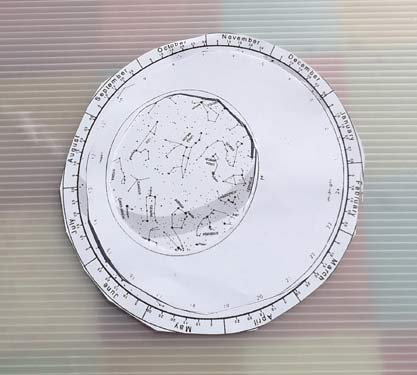Download the Planisphere template

Cut out the two shapes. Cut out the inner shape from the mask (the upper circle).


Match the time on the top disc with the date on the bottom disc, and the stars you can see through the cut-out will match the stars you can see in the sky. There is a small N on the upper disc, which should point to the North.

This is what is known as a “reduced star planisphere”. It does not show every star, but only those easily visible. Sadly, light pollution in our big cities means that we only every see the brightest stars, but this planisphere should give you an idea of the ones you can see.
The lines joining the stars are imaginary…. they indicate the shape of the constellations, the names we give to clusters of stars in the sky, to help to recognise them. The grey band on the disc represents the Milky Way, the faint light of millions of stars in our galaxy. You are unlikely to be able to see this feature from London, or any other major city – you need the very dark skies you get in National Parks or the Scottish Highlands, where there is less light pollution.
Incidentally, these star maps are known as planispheres because hey represent a spherical star map on a plane (flat) surface. The name has nothing to do with the planets, and the planisphere won’t show their position. If you see a bright point of light in the sky that isn’t on the planisphere, chances are it is a planet – and, most probably, one of Venus, Mars or Jupiter. Venus is very bright, but only visible in the two hours after sunset or two hours before sunrise. Jupiter is bright and can be seen at any time of the night. Mars has a distinctive red colour.
Careers related to this activity Transport and Aerospace
